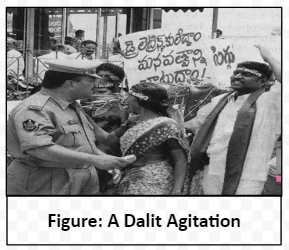![]() 12 Dec 2023
12 Dec 2023
Caste-based movements refer to social and political movements that aim to address issues related to caste discrimination and inequality. These movements are particularly prevalent in societies where caste plays a significant role in social stratification and determines an individual’s social status, occupation, and opportunities.
The caste system categorizes people into distinct groups based on birth, with each group having its own set of privileges, restrictions, and social roles. The hierarchical nature of the caste system has led to discrimination and oppression of certain castes, often referred to as “lower castes” or “Dalit Movement.

G.B. Pant during a speech that moved the constitution of the Advisory Committee on fundamental rights, minorities, etc.
<div class="new-fform">
</div>